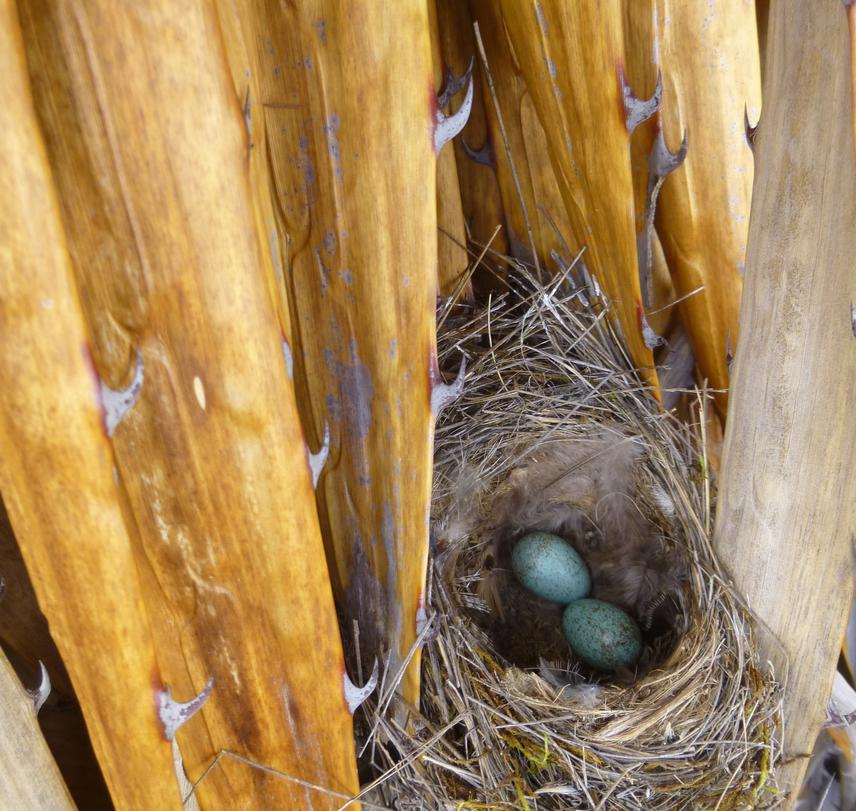Shannon Fletcher Zuschlag
The aim is to ascertain the number of, condition of and location of the entire population of protected and endangered Puya raimondii plants in the National Sanctuary of Calipuy.
I am a Peace Corps Volunteer serving a 2-year term in the city of Santiago de Chuco located in the Andes Mountains in the department of La Libertad in Peru. The National Service of Natural Protected Areas (SERNANP) is my counterpart agency in Santiago de Chuco. They are responsible for managing the Natural Protected Areas in the department of La Libertad, including the National Sanctuary of Calipuy.

Bird Nest in Puya.
The Sanctuary covers an area of 4,500 ha between 3,450-4,300 meters in altitude. The Sanctuary includes a large and dense population of Puya raimondii. Threats to the Sanctuary include human encroachment, cattle ranching, burning and destruction of Puya raimondii. The protected area’s administration lacks enough financing to effectively monitor these plants. More information is needed to calculate the number of Puya raimondii left, to establish their current state of conservation, and to evaluate their reproductive potential. The plant is considered “Endangered” by the IUCN Red List of Endangered Species. The Puya raimondii is one of the tallest and longest-living plants in the world.
This Sanctuary is the largest shelter of Puya raimondii in the country and it also protects the densest stand of Puya raimondii’s in Peru. The flowering stalk of a Puya raimondii can measure up to 10 meters in height. One plant can live 100 years. Each plant only flowers once and then dies. During the plant’s flowering period, 8-10 thousand white flowers cover the stalk and support many species of insects and birds including the Giant Hummingbird (Patagona gigas) and Black-Throated Flowerpiercer (Diglossa brunneiventris). The Puya raimondii’s leaves have a spiked border and protect many other species of
birds who build their nests among them. The plant is an authentic relic, one of the oldest species of plants in the world and has been called a “living fossil.”
My contribution to this plant’s future is to establish benchmark conditions for its population within the Sanctuary’s borders. By recording plant height, approximate age, condition, habitat, use by animals and elevation for each plant in the Sanctuary will provide the park guards with enough information to make inferences about the current population and its reproductive potential. With continual monitoring after the benchmark condition of the population is established, the park guards can determine if the population is growing or declining. The benchmark data and subsequent maps can help guide future monitoring and protection programs.